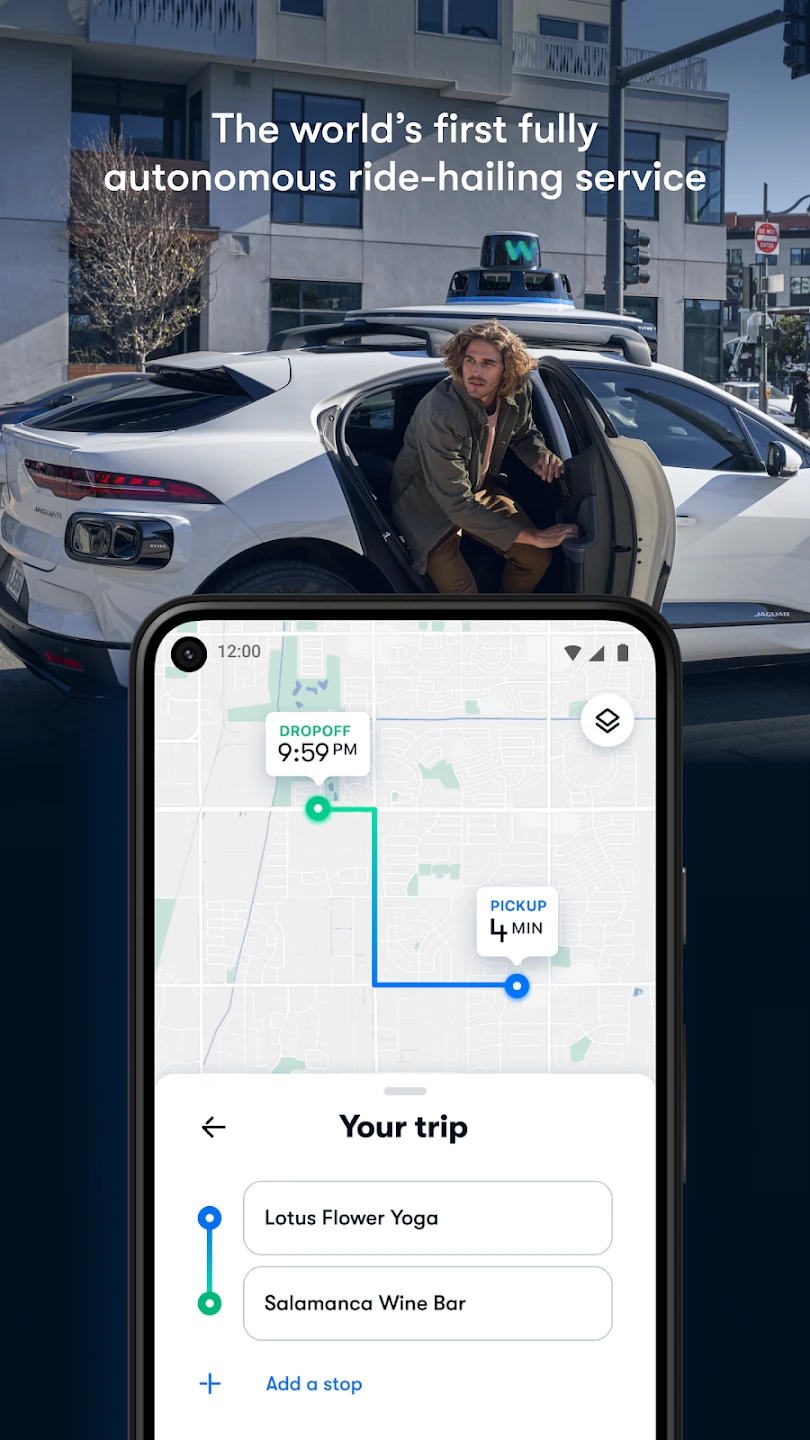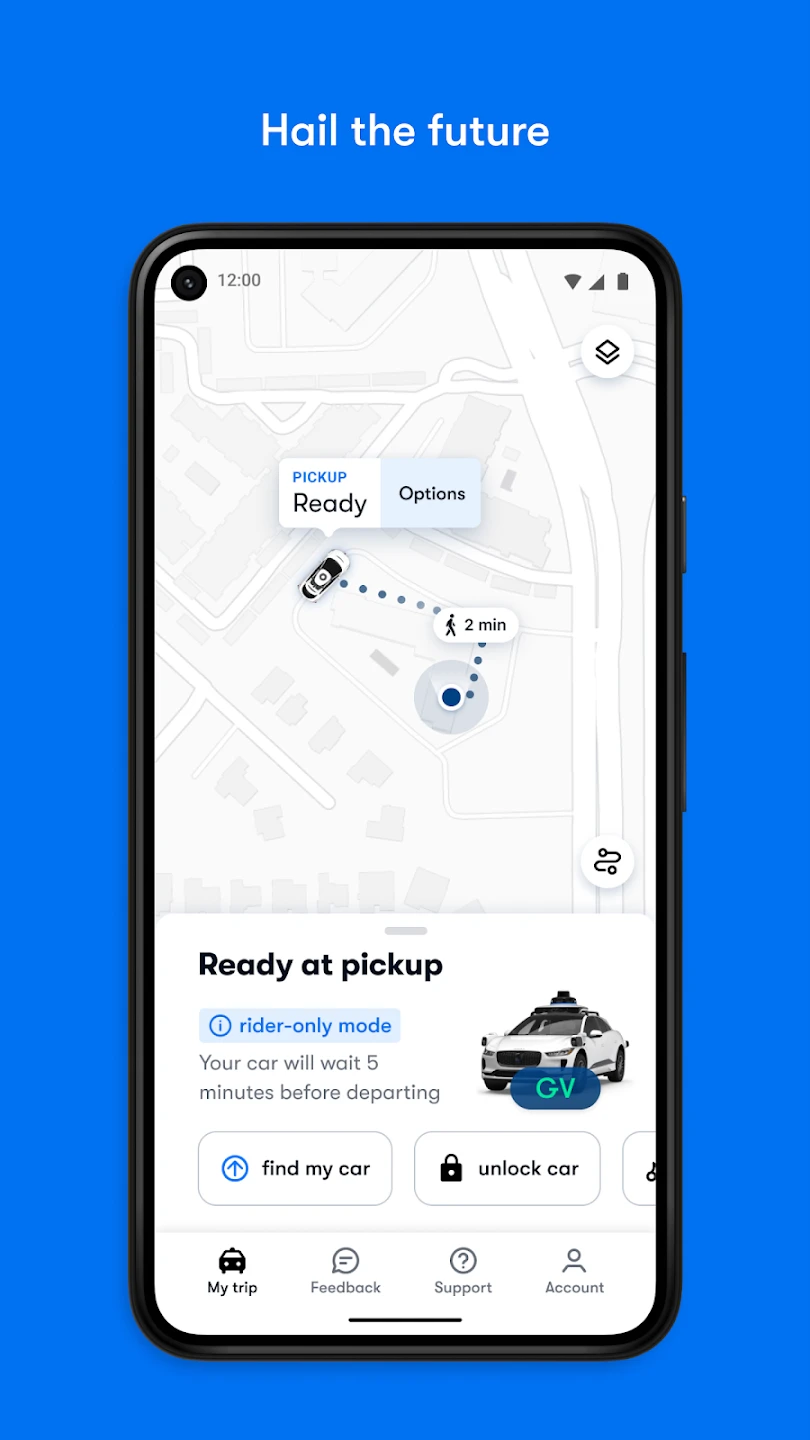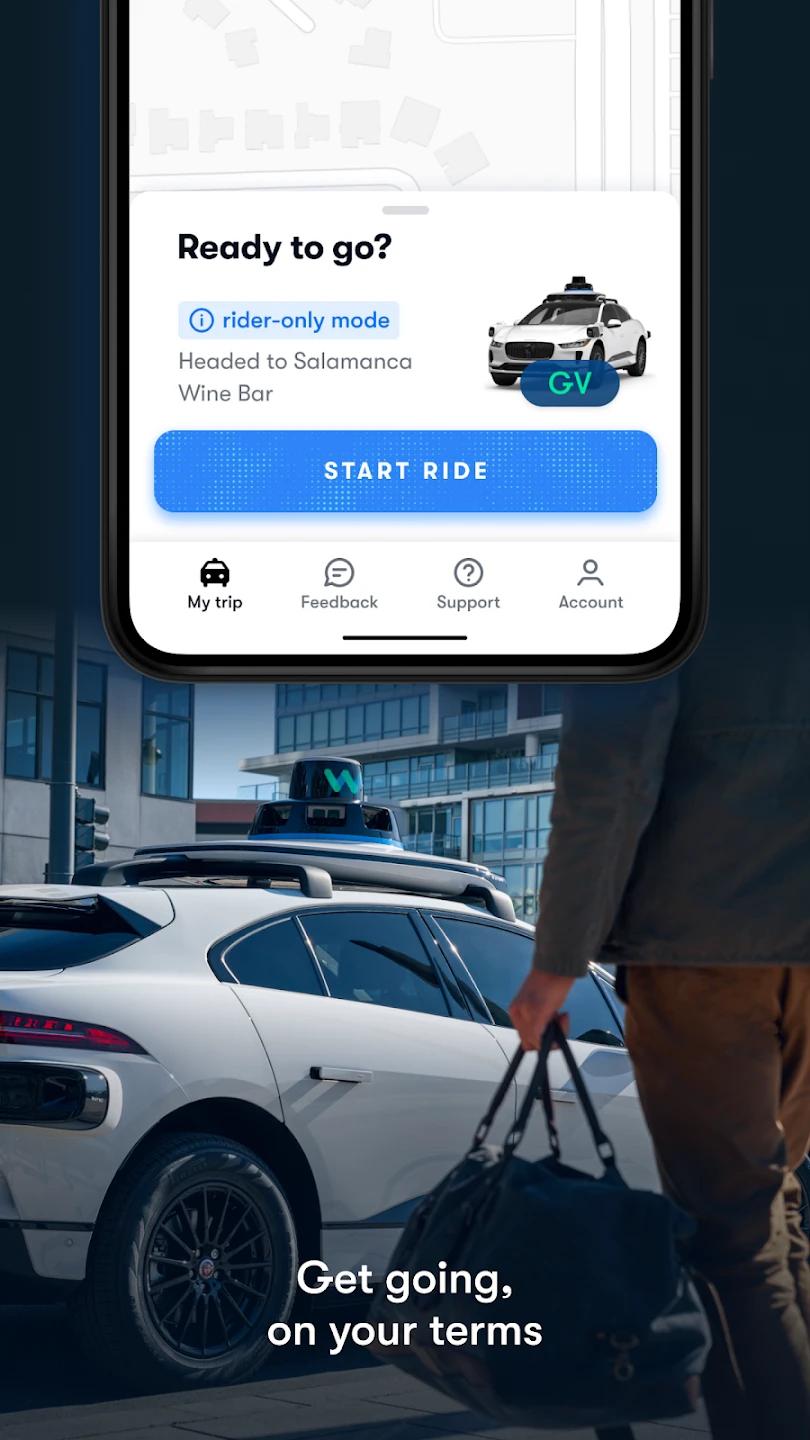 |
|
| Rating: 4.9 | Downloads: 500,000+ |
| Category: Maps & Navigation | Offer by: Waymo LLC |
The Waymo One app is the digital gateway to autonomous ride services, allowing users to book and manage rides using Waymo’s fleet of self-driving vehicles. It connects rider requests directly to a sophisticated dispatch system, offering a user-friendly interface for scheduling, tracking, and paying for convenient, shared autonomous rides. Primarily designed for individuals seeking modern, contactless transportation options, the app simplifies interactions within the Waymo One network.
The app’s key value lies in its seamless integration of technology for safety, convenience, and potentially lower costs compared to traditional taxi services. Whether commuting to work, running errands, or traveling long distances, Waymo One provides a reliable and novel way to experience autonomous driving on a large scale, offering peace of mind through its advanced safety features and transparent journey tracking.
App Features
- Booking & Scheduling: Users can request rides to specific destinations, specify pickup windows, and even plan future trips with scheduled pickups, including ride requests between entire addresses filled with passengers. This saves time by automating parts of the planning process, useful when juggling multiple appointments or needing transport far in advance.
- Live Ride Tracking: After a ride is assigned, the app shows the vehicle’s real-time location on a map, along with estimated arrival time at both pickup and drop-off points, displayed in an easy-to-read interface. Knowing where your autonomous vehicle is heading helps plan your time effectively and reduces waiting anxiety, providing clear, constant status updates.
- Vehicle Information Display: The app typically displays details about the assigned vehicle before it arrives, such as its approximate make and model, allowing users slight anticipation or preference for vehicle type if needed. This enhances transparency and user comfort, informing riders about the vehicle they will encounter.
- Secure Payment Processing: Payment for rides is automatically and securely charged to the user’s linked payment method at the end of each trip, eliminating the need for cash or cards during the journey and streamlining the transaction process. This frictionless payment integration makes repeated use more convenient and encourages user loyalty.
- App Support & Feedback: Users can access information about known issues, Service Level Agreements detailing wait and trip time guarantees, and submit feedback or report concerns directly through dedicated sections within the app. Having these resources readily available directly addresses user needs for safety and responsiveness within the Waymo One ecosystem.
- User Account Management: Registered users can manage their personal information, vehicle restrictions (if any), special needs accommodations, and view detailed trip histories, including past rides, fares, and driver performance information (though for autonomous vehicles, sensor logs might be relevant). This empowers users to customize and monitor their Waymo One experience according to their specific requirements.
Pros & Cons
Pros:
- Advanced Technology Experience:
- Enhanced Passenger Safety Focus:
- Reduced Stress & Convenience:
- Potential Cost Savings:
Cons:
- Limited Availability & Ride-Hailing Restrictions:
- Variable Pricing Tiers & Potential Higher Cost:
- App Complexity & Information Overload:
- Booking Constraints & Scheduling Rigidity:
Similar Apps
| App Name | Highlights |
|---|---|
| Lyft |
Lyft is a major traditional ride-hailing service with standard cars, vans, and scooters. It emphasizes surge pricing during high-demand times but lacks the autonomous vehicle technology core of Waymo One. |
| Uber |
Uber’s vast global network offers cars, bikes, scooters, and increasingly, autonomous test vehicles. Known for its dynamic pricing model, Uber is a direct competitor in on-demand urban mobility but differs in its approach to autonomous integration. |
| Cruise |
Cruise is another company heavily focusing on deploying autonomous ride services in designated areas. Similar in concept to Waymo One, it offers a booking method specific to its autonomous fleet, primarily for ride requests between defined origin and destination points. |
Frequently Asked Questions
Q: How do I book my first autonomous ride with Waymo One?
A: Launch the Waymo One app, ensure you’re signed in, input your pickup and destination addresses, schedule or request an immediate ride, and confirm your payment details linked to the account. Your autonomous ride is on its way within minutes.
Q: What types of autonomous vehicles can I expect with Waymo One depending on location?
A: Depending on availability and regulatory environment, you might request rides in various autonomous vehicles from different model years within the Waymo fleet, all operating under the Waymo One service framework. Fleet variety may differ by city or region.
Q: Are there upfront costs or a membership required for using Waymo One?
A: Typically, Waymo One operates with ride requests open to the public without mandatory memberships or yearly fees. Any service tiers or advance purchase options exist but aren’t necessarily required for basic usage. Check the app for current availability.
Q: What happens if my autonomous vehicle arrives late or my trip takes a long time?
A: Once you book a ride, Waymo provides estimated arrival and trip durations upon request acceptance. You can track its progress in real-time. In the event of significant delays, you can contact app support using the designated feature, though service level agreements vary by region.
Q: How is my safety ensured during rides with autonomous vehicles?
A: Waymo’s autonomous vehicles are built with redundant systems and undergo extensive testing and simulation. The app includes features like real-time tracking for transparency and safety protocols managed by Waymo. Reporting mechanisms are also available in case you need assistance during your autonomous journey.
Screenshots
 |
 |
 |
 |






